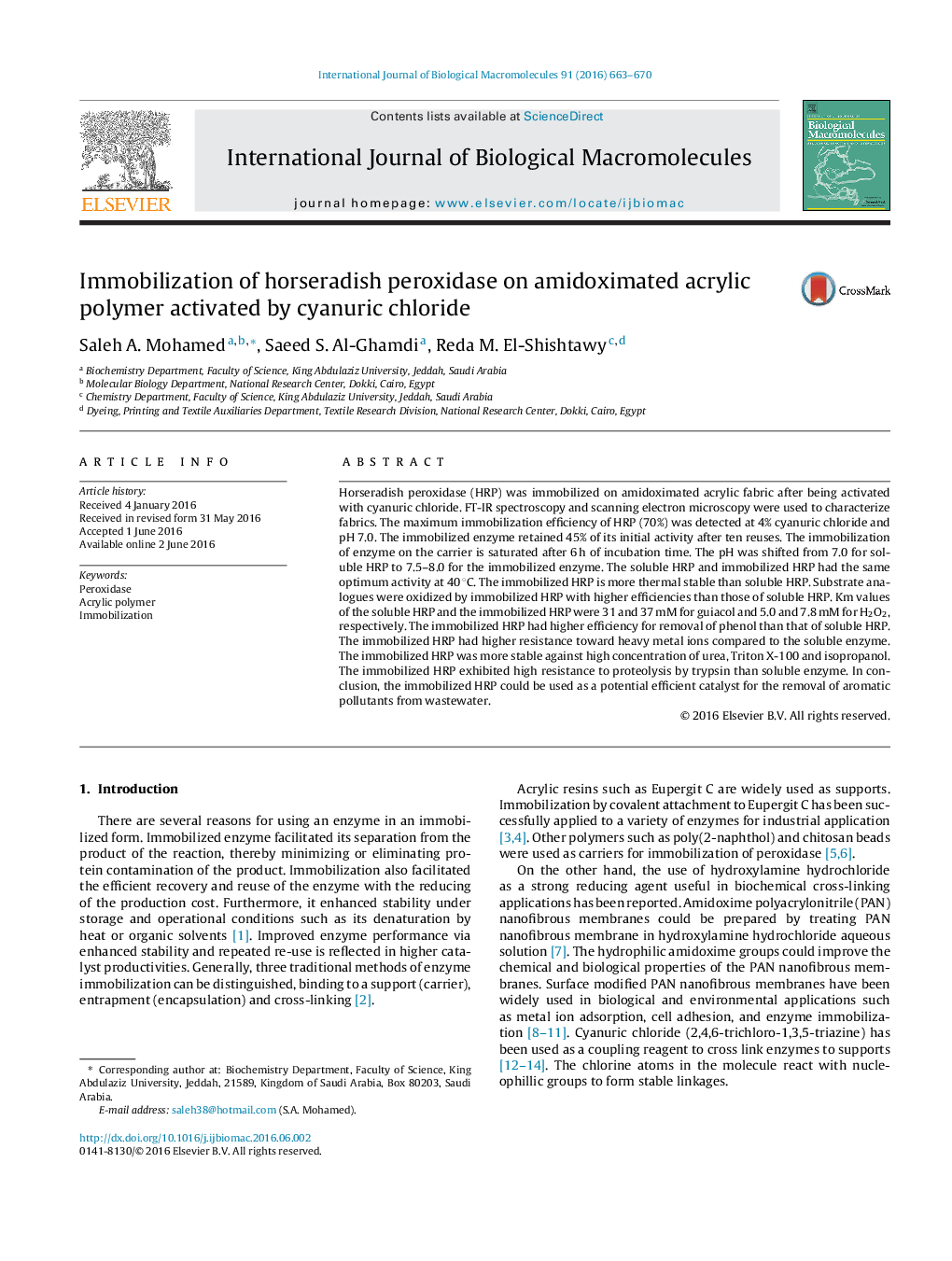| Article ID | Journal | Published Year | Pages | File Type |
|---|---|---|---|---|
| 1985672 | International Journal of Biological Macromolecules | 2016 | 8 Pages |
•Peroxidase was immobilized on amidoximated acrylic fabric and activated with cyanuric chloride.•FT-IR spectroscopy and scanning electron microscopy were used to characterize fabrics.•Physicochemical properties of soluble and immobilized enzymes were described.
Horseradish peroxidase (HRP) was immobilized on amidoximated acrylic fabric after being activated with cyanuric chloride. FT-IR spectroscopy and scanning electron microscopy were used to characterize fabrics. The maximum immobilization efficiency of HRP (70%) was detected at 4% cyanuric chloride and pH 7.0. The immobilized enzyme retained 45% of its initial activity after ten reuses. The immobilization of enzyme on the carrier is saturated after 6 h of incubation time. The pH was shifted from 7.0 for soluble HRP to 7.5–8.0 for the immobilized enzyme. The soluble HRP and immobilized HRP had the same optimum activity at 40 °C. The immobilized HRP is more thermal stable than soluble HRP. Substrate analogues were oxidized by immobilized HRP with higher efficiencies than those of soluble HRP. Km values of the soluble HRP and the immobilized HRP were 31 and 37 mM for guiacol and 5.0 and 7.8 mM for H2O2, respectively. The immobilized HRP had higher efficiency for removal of phenol than that of soluble HRP. The immobilized HRP had higher resistance toward heavy metal ions compared to the soluble enzyme. The immobilized HRP was more stable against high concentration of urea, Triton X-100 and isopropanol. The immobilized HRP exhibited high resistance to proteolysis by trypsin than soluble enzyme. In conclusion, the immobilized HRP could be used as a potential efficient catalyst for the removal of aromatic pollutants from wastewater.
